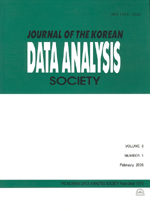The Study on Bank Risk Level Influenced by Economic Shocks
- 한국자료분석학회
- Journal of The Korean Data Analysis Society (JKDAS)
- Vol.17 No.1
-
2015.0281 - 91 (11 pages)
- 5

This study examines empirically the relationship between the bank risk level and economic shock. This study uses rolling regression model to derive the systematic risk based on the Haq, Heaney (2009) and adopt the panel data models to confirm risk factor to bank risk level. As the independent variables, the proxy variables representing financial market condition, credit level, and liquidity level are adopted in this study. As the proxy variables for financial market variables, the level of interest rate, stock market price, and foreign exchange rate between Korean won and U. S. dollar are used. Bounced rate and the status of business cycle are regarded as the proxy variables for credit level. In addition, deposit turn over rate and stock market trading value are adopted as the liquidity level. Main test results are as follows. First, high level of interest rate and low level of foreign exchange rate lead to reducing bank s systematic risk level which is transferred to other banks. This evidence is line with Choi, Elyasiani, Kopecky (1992) and Delis, Kouretas (2011). Second, credit level also plays a significant role in determining the bank risk. This results support the Nijskens, Wagner (2011). Third, stock market liquidity is risk factor affecting bank risk. Thus, the higher trading amounts in the stock market is, the more increase the bank risk is.
1. Introduction
2. Theoretical backgrounds
3. Data and methodology
4. Analysis results
5. Conclusion
References
(0)
(0)